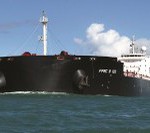Commodities stable against the odds, analysts say
A pair of analysts from HSBC Global Research say that, despite recent suggestions to the contrary, it’s “so far, so good” for global commodity prices – and that’s good news for Australia and New Zealand.
Paul Bloxham, HSBC Global Research’s chief economist for Australia and New Zealand, says while “doomsayers” have suggested that slower Chinese growth and Federal Reserve tapering could see large falls in commodity prices, so far, that has not eventuated.
“Commodity prices remain structurally high,” Bloxham wrote in his most recent commentary on Antipodean economics. “Indeed, they have been surprisingly stable. Over the past year they have only fallen modestly (-5%).”
Bloxham said the 5% decline in 2013 followed a sharper fall in 2012, which is likely to have largely reflected a slowing Chinese growth, as well as a ramp-up in global supply of key commodities.
“Though it is worth keeping the magnitude of the fall in context,” Bloxham reasoned. “Commodity prices are -20% below their 2011 peaks, but they remain 112% higher than their 1990s average, in inflation-adjusted terms.”
Even in the past couple of months, which have seen Federal Reserve tapering begin, weakness in China’s manufacturing sector and a sharp fall in emerging market currencies and asset prices, most commodity prices have remained fairly stable, Bloxham points out.
“Copper prices have been broadly stable for the past 10 months, and have risen in the past couple of weeks. While iron ore prices fell modestly in early January, they have stabilised in the past month or so, at still high levels, of around USD122 a tonne.”
Bloxham’s colleague and co-head of Asian economics research for HSBC Global Research, Frederic Neumann, agrees: commodity prices are staying relatively stable, despite many things that should be bringing them down.
“Growth in the biggest markets, China included, slowed in recent months,” Neumann wrote in an op-ed piece on February 13. “The dollar, meanwhile, has been gaining strength. In principle, this should lead to tumbling commodities. Yet, they are generally holding up well …
“It’s a bit of a puzzle,” he commented. “Keep an eye on commodities as a health check on how well the world economy is faring. So far, it’s not exactly disastrous.”
The stabilisation of commodity prices, along with recent efforts at cost cutting, have led to some pleasing results in recent months for Australia’s big miners. This, Bloxham infers, will be good for Australia’s GDP.
But why are commodities staying stable against the odds?
If China’s formerly double-digit growth rates have now declined to around 7.5% per annum, large producers have increased supply, and emerging economies are slowing even more significantly than China, then why isn’t this being reflected in commodity prices?
Bloxham gave his take: “On this, our view has been a little different to some others. The starting point is a long view of history … Whereas global growth in the 1980s and 1990s was driven by Western economies and their big services sectors – like finance and information technology – growth in the past decade has become much more commodity-intensive and in this way is more similar to the composition of global growth in the 1950s, 60s and 70s.”
The shifting composition of growth has reflected a number of factors, Bloxham said.
The emergence of Asia, particularly China, has given the world’s commodity producers a customer with a huge appetite for infrastructure, he explained. Urban populations in Asia are growing rapidly, producing a strong demand for energy. And rising middle-class incomes are supporting demand for better housing, roads and bridges, as well as more reliable electricity and better food.
“This process has a long way to run yet,” he wrote. “Even though China has already built a significant amount of infrastructure, HSBC’s view remains that there is still a lot more to build, as urbanisation is expected to continue for many years yet.
“Beyond China, we also expect that much of the rest of Asia will have a significant infrastructure requirement which should support demand for hard commodities.”
Source from: here

